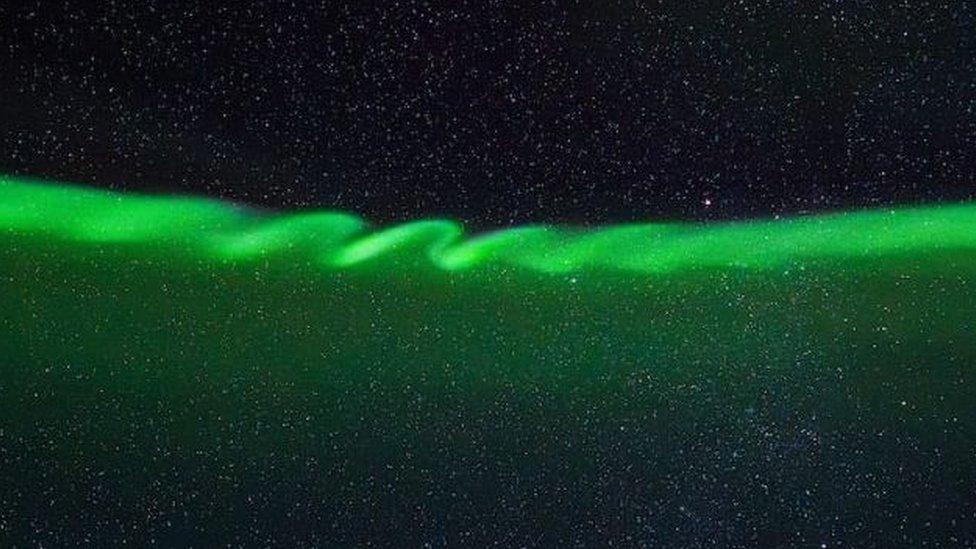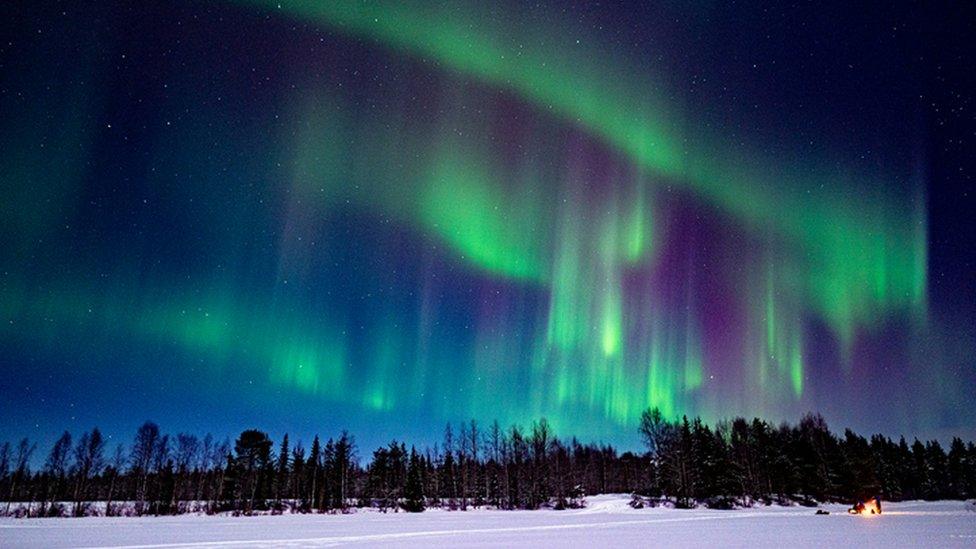Aurora curls: What are they and why do they happen?
- Published
- comments

Aurora curls are a very rare phenomenon
You may have heard of the Aurora Borealis - also known as the Northern Lights - but have you heard of aurora curls?
A photographer recently snapped this super rare weather phenomenon on a trip to Iceland.
But what are aurora curls and how common are they?
Keep reading to find out..
What are aurora curls?

Nasa's GREECE mission was launched to study auroras
The curls were photographed by amateur astronomer Jeff Dai who spotted the dancing lights above the Kerid Crater in the south of Iceland.
Putting his pictures up on social media, Mr Dai explained how the aurora lasted for "several minutes" before disappearing.
Aurora curls are a unique phenomenon thought to be caused by vibrations in the Earth's magnetic field.
The event is incredibly rare as magnetic waves are typically invisible and are usually only picked up using specialised scientific equipment, but if the right conditions are present then they can sometimes be visible.

Auroras normally move randomly across the night sky with no specific pattern
We don't know much about the aurora curls as they are so uncommon, however scientists have a few theories as to why they happen and what might cause them.
Some experts think that the formation of curls comes from forces driven by extremely low frequency waves.
Another theory is that they're caused when solar particles hit the large waves in Earth's magnetic field causing them to vibrate, like when you pluck the string on a guitar.
Aurora displays have recently become a more common and impressive event because the Sun is experiencing a surge in activity as it builds towards a peak in its 11-year solar activity cycle - which is expected to take place later this year.
What are the Northern Lights?
WATCH: Amazing Northern Lights display in Finland
The lights we see in the night sky are in actual fact caused by activity on the surface of the Sun.
Solar storms on our star's surface give out huge clouds of electrically charged particles. These particles can travel millions of miles, and some may eventually reach the Earth.
The charged particles from the Sun aren't dangerous and move towards Earth's north and south poles.
This is why Northern Lights - Aurora Borealis - are seen closer to the Earth's north and south pole.
In the southern hemisphere, the phenomenon is called the Southern Lights - or the Aurora Australis.
Different gases give off different colours when they react with the Sun particles in the atmosphere. The green we see in an aurora is oxygen, while hints of purple, blue or pink are caused by nitrogen.
